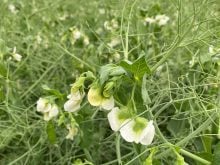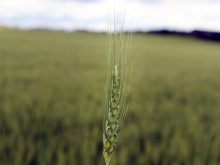SASKATOON — A group of farmers has returned from Cereals Canada’s New Crop Trade and Technical Missions with a renewed sense of pride.
“As I heard several times, there’s no other grain like Canadian grain,” said Dean Hubbard, a grower who farms southeast of Claresholm, Alta.
Related stories:
Read Also

Manitoba bans wild boar possession
Manitoba has tightened the regulatory status of Eurasian wild boar in an effort to help fight back against invasive wild pigs.
“We’re in a class by ourselves. To hear that made me feel very proud.”
He participated in a mission that had stops in Algeria, Italy, Morocco and the United Kingdom.
“What I heard was how much our international customers value and rely on the quality of the grain they receive from Canada,” Hubbard said during a recent Cereals Canada webinar about the missions.
Elaine Sopiwnyk, vice-president of technical services with the organization, said 2023 was another banner year on that front.
“Quality was excellent this year in all wheat classes,” she said.
More than 95 percent of the Canada Western Red Spring wheat was No. 2 or better with average protein content, and more than 80 percent of the Canada Western Amber Durum was No. 2 or better with higher-than-average protein.
Tara Sawyer, a grower from Acme, Alta., had one-on-one conversations with the customers she encountered in Nigeria, the United Arab Emirates, Singapore and Malaysia.
“My favourite was one customer we met who referred to Canadian wheat as the gold standard,” she said.
“I don’t think I’ll ever forget that.”
Korey Peters, a farmer from Randolph, Man., explained to customers in Japan, Indonesia, the Philippines and China how Canada’s quality is preserved by the cold climate and farmers’ large capital investments.
“We have the ability to store grain and keep that quality throughout the season,” he said.
Josh Boersen, a grower from southwestern Ontario, heard glowing reports from customers he spoke with in Mexico and Colombia.
“What was promised to the millers in Mexico was what they received or better in most cases,” he said.
Hubbard didn’t know what type of questions to expect. One customer in Algeria asked him how much organic carbon he could lock into his soil.
“Luckily I have taken soil analysis off every field every year since 1996,” said Hubbard, who used to work at Agriculture Canada’s Lethbridge Research and Development Centre.
Environmental sustainability was a big topic of conversation.
“An issue that often comes up globally and can be a touchy subject is around our use of pesticides, or more specifically, glyphosate,” said Boersen.
He asked customers if they would prefer to receive wheat that is full of weed seeds and other contaminants and reminded them that glyphosate is a valuable tool for no-till systems, which is a sustainable practice.
Sawyer said some customers wanted to be able to trace Canada’s wheat shipments all the way back to the individual farm level.
Those inquiries prompted a discussion about Canada’s bulk handling system and the difficulties and costs associated with delivering that level of traceability.
Karen Pitura, technical specialist for end products and baking at Cereals Canada, also received positive feedback on her journey to Chile, Peru, Ecuador, Colombia and Mexico.
“There was even one mill in Latin America that mentioned that many of the bakeries that they supply are actually addicts of Canadian wheat,” she said.
The mill said it is difficult to get bakers to even try wheat from other origins.
Kristina Pizzi, manager of analytical services with the organization, heard a customer refer to CWAD as “the Ferrari” of durum.
But there were also a few criticisms.
Pitura said a bakery in Latin America was struggling with using CWRS to make bread.
“The problem was that it’s very strong and causing longer mix times at the bakery,” she said.
Norbert Cabral, manager of milling with Cereals Canada, said moisture content was also an issue in some hot and humid regions.
When moisture content is 13.5 percent or higher it causes issues with condensation and internal grain heating. Customers say they can’t store the wheat for more than three months.
Cabral said Cereals Canada provides those customers with technical information for managing moisture content.
Derek Bunkowsky, chief grain inspector with the Canadian Grain Commission, said the CGC issues 20,000 documents a year on cargoes of grain leaving Canada.
The “vast majority” of those documents are either statements of assurance or letters of analysis, which are both vital pieces of Canada’s quality control system.
They are part of the grain commission’s cargo monitoring system on bulk vessels leaving Canada, which tests for pesticide residue levels, mycotoxin levels and heavy metals.
Customers put a lot of faith in those documents.
“I can tell you firsthand that if there’s ever an issue with any of those statements of assurance, I hear about it,” said Bunkowsky.
Contact sean.pratt@producer.com
















